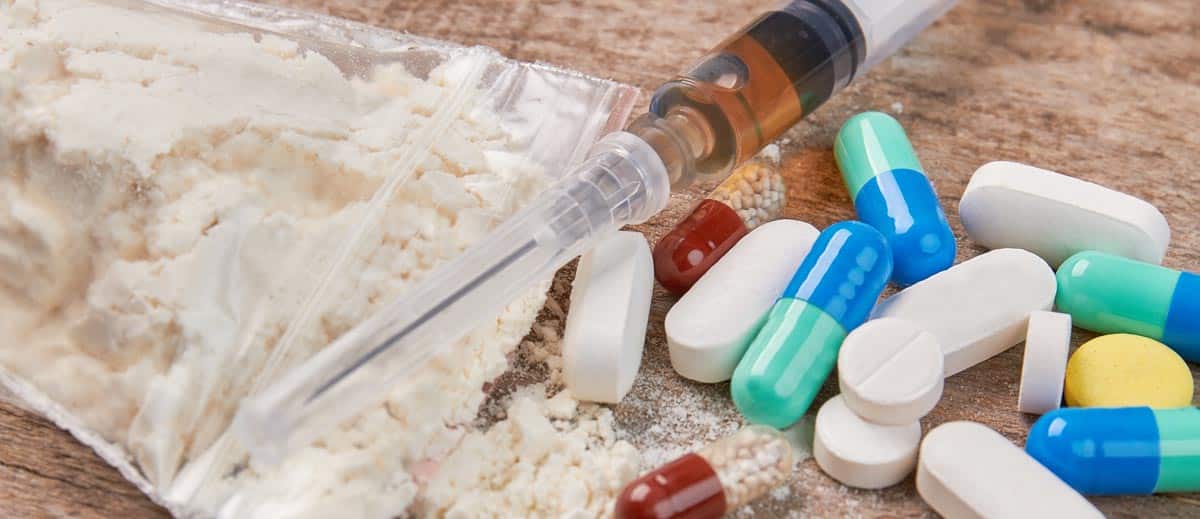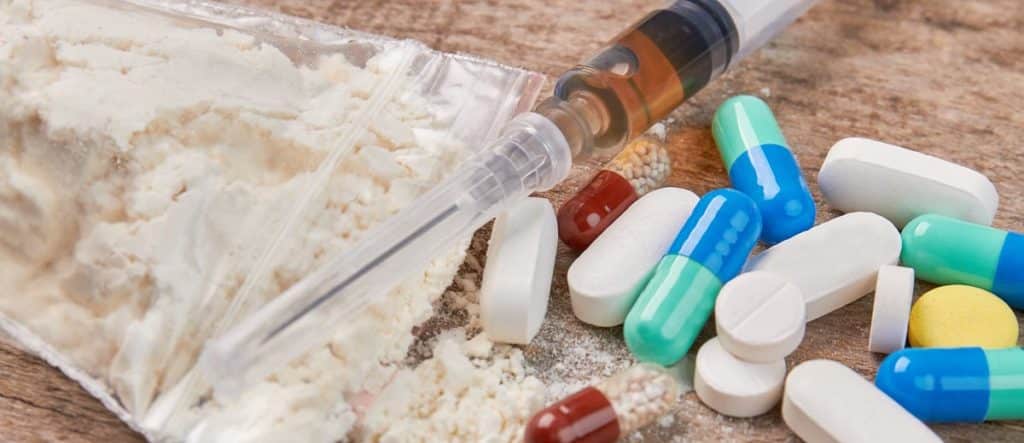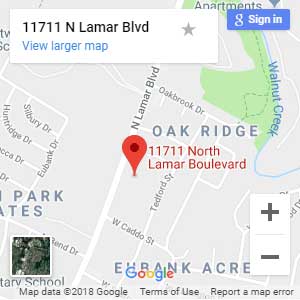Laced Drugs: What Are They and Why Are They Dangerous?

Table of contents
Illegal drug manufacturers and suppliers may sell laced drugs, which are two or more substances mixed together. Unsuspecting buyers may not be aware of the dangers and health risks that come with ingesting these drugs. Unfortunately, recent drug overdose spikes related to fentanyl-laced drugs are evidence of these dangers. Below, we’ll take a closer look at what laced drugs are as well as the risks of using them.
What are laced drugs?
Illegal drug manufacturers lace drugs by combining two or more drugs into one substance, often without the buyer or the consumer knowing. This practice is also known as “cutting” drugs. Typically, the supplier will cut drugs with other substances that produce similar effects. The supplier usually does this discreetly so they can make more money by selling more for less.
Suppliers can cut drugs with various substances, including other drugs like caffeine, PCP, or fentanyl. However, illegal drug manufacturers may also use toxic household substances and chemicals that produce mind-altering side effects. Common examples of cutting agents include:
- Laundry detergent
- Rat poison
- Talcum powder
- Baking soda
- Boric acid
- Embalming fluid
Cutting agents and drugs like fentanyl are cheap, easy to get, and they can amplify the high of other drugs. Therefore, drug manufacturers frequently lace their drugs to keep users coming back for more. Fentanyl, in particular, is highly addictive. Often, people who unknowingly take fentanyl-laced drugs get hooked on it quickly and seek out more drugs as a result.
Related post: What Is Polysubstance Abuse?
Why are laced drugs dangerous?
Taking any two drugs together, rather than alone, increases the risk of harm. Sometimes, the resulting side effects can even be deadly.
- For example, combining stimulant drugs like cocaine and meth can increase the risk of heart problems and substance-induced psychosis, which is a severe mental illness. Someone who uses two or more stimulants at once is also more likely to experience severe anxiety and panic attacks. Serotonin syndrome may also occur and can be fatal. This condition happens when the brain gets overloaded with the neurotransmitter called serotonin, which makes us feel happy.1
- Alternatively, combining depressant drugs like opioids, benzodiazepines, and alcohol can be equally as dangerous. Depressants slow down breathing and heart rate, so taking two or more types of them at once can increase a person’s risk of having a fatal overdose.
- Combining stimulants and depressants (uppers and downers) can produce highly unpredictable side effects. Examples might include heart problems, dehydration, overheating, and kidney failure.
Depending on the person, it can be difficult to anticipate the side effects of a particular drug. But when someone uses two or more drugs at once, predicting the side effects can be nearly impossible. The effects of laced drugs will vary depending on the following factors:
- The person’s age, size, weight, and overall health
- How much of the drug the person uses
- The potency of the drugs (this varies from batch to batch for illegally manufactured drugs)
- If the person takes prescription medications or drinks alcohol with the laced drugs
How common are laced drugs?
Laced drugs are more common than you might think. They have been around for a while, and suppliers sell many laced drugs on the street or disguise them as entirely different drugs. However, the rise of fentanyl has increased cause for concern. Fentanyl is a highly addictive synthetic opioid that is 80-100 times stronger than morphine. It is a powerful opioid that is often sold as highly potent heroin or added to it. Even just a pinch of it can cause an intense short-term high, slowed breathing, fainting, seizures, or a deadly overdose, according to the DEA.2
According to the Centers for Disease Control and Prevention (CDC), rates of drug overdoses involving heroin, natural and semisynthetic opioids, and methadone decreased between 2018 and 2019. However, the rate of overdose involving synthetic opioids like fentanyl continued to increase.3 The main contributing factor of this increase in overdose rates was drugs combined with fentanyl.
Synthetic opioids and other synthetic drugs are very dangerous when produced illegally because suppliers frequently blend them with various unknown substances. In addition, the people taking them don’t know what they’re putting into their bodies, how much of it, or how potent it is.
How do you know if someone is selling laced drugs?
It can be very difficult to tell when a supplier is selling laced drugs. Drugs sold as Xanax, OxyContin, or heroin could easily contain something more potent and deadly like fentanyl. Unfortunately, there’s no reliable way to tell whether a manufacturer has laced drugs without testing them in a laboratory.
Even if you think you know what a drug is, it could be laced or counterfeit, and one use is enough to do severe damage to your health. As such, parents should educate their children on the risks of taking prescription pills or other drugs from friends or people they don’t know, as they could lace them with other substances. And if you’re already addicted, it’s best to seek out professional help.4
Treatment for polydrug abuse
If you purchase illegally manufactured drugs on the street, from a dealer, or through a friend, you may develop an addiction with chronic use of these substances. Addiction is especially likely if the manufacturer has laced the drugs with fentanyl or another addictive drug.
Similarly, if you’re combining multiple drugs to make the high more powerful or reduce unwanted symptoms of uppers or downers, you could also become addicted. Consistent polydrug abuse can also cause serious and unpredictable health problems like organ damage, mood disorders, pain, nausea and vomiting, infections, heart problems, overdose, and more.
If you think you’re addicted to one or more drugs, chances are you might need help to recover. Detox is typically the first step, but most people who abuse multiple addictive substances need medical detox treatment to recover because withdrawal can be unpredictable. In some instances, it can also be life-threatening.
During a medical detox program for polydrug addiction, treatment professionals will complete a full assessment of your physical and mental health to determine the best treatment protocol. Then, they will design a highly personalized detox program that meets your treatment needs using that information. While you withdraw from addictive substances, your treatment team will use medications to treat any uncomfortable symptoms and provide the safest detoxification process possible.
At Briarwood Detox Center, you will also receive clinical treatment to address mental health issues, music and art activities to facilitate well-rounded healing, and access to H&I meetings, where you can learn more about the 12-Step Program.
Related post: Fentanyl-Laced Cocaine: An Increasing Problem in the U.S.
Start recovering from addiction today
The unpredictable side effects of laced drugs are a very real danger to people who are addicted. If you’re struggling with addiction, there is hope for you, and healing is possible. Please call (512) 262-4426 or contact us online for more details about our individualized drug detox programs.
References:
Break Free From Your Addiction Today
(in 3 easy, confidential steps)

Verify your insurance
Complete our fast, free, and easy verification process over the phone to determine the extent of your insurance coverage.

Make an informed decision
We will provide personalized placement recommendations based on your insurance, treatment needs, financial situation, and schedule.

Contact us
Call (888) 857-0557 or fill out our online form for a free and confidential personal consultation with an admissions specialist.








